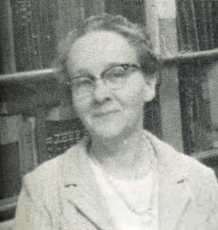Cornelia Kaercher was the librarian at St. Paul Academy through my junior year. Miss Kaercher, as we knew her, stocked paperback books for sale to students in addition to tending to the school’s collection of books. Thanks to Miss Kaercher, I bought and read The Catcher In the Rye in seventh grade, long before it had made its way into high school curricula, and Dandelion Wine, the book that gave me my first exposure to Ray Bradbury. By the time I graduated I had read every one of his books published before 1969.
Miss Kaercher also stocked such “young adult” literature as the Hot Rod series of books by Henry Gregor Felsen: Hot Rod, Street Rod, Crash Club, Road Rocket, and so on. Street Rod was my favorite. I knew nothing about Felsen at the time, but the books were morally centered. The Biographical Dictionary of Iowa has posted this backgrounder on him. It all makes sense: “The series…was especially popular with teenage males, and sold more than eight million copies. Hot Rod (1951) was the most popular title and remained on the best-seller list for 27 years. Even though his books were about young men, fast cars, and girlfriends, Felsen used many of them to moralistically explore the evils of drug abuse, sexism, and racism.”
I was surprised to learn that Felsen served on the staff of Henry Wallace’s 1948 campaign for president and that he himself was a Communist: “Felsen was questioned about his membership in the Communist Party. He admitted his earlier participation, but argued that it was no longer relevant.” Maybe no longer relevant to the Hot Rod series, anyway.
The profile of Felsen adds that he taught part-time at Drake University from 1964-1969: “He received criticism for his unorthodox teaching methods. He neither gave exams nor assigned books for class, and he refused to fail any student.” He seems to have been an early adopter of educational trends.
 The Felsen trip is a detour from this expression of gratitude to, and admiration for, Cornelia Kaercher. A native of Milbank, South Dakota, she was a warm woman and an easy conversationalist with her young customers — all boys — ranging in age from 12-18. I remember talking with her about the news of the day when Khrushchev was deposed in 1964 and frequently thereafter.
The Felsen trip is a detour from this expression of gratitude to, and admiration for, Cornelia Kaercher. A native of Milbank, South Dakota, she was a warm woman and an easy conversationalist with her young customers — all boys — ranging in age from 12-18. I remember talking with her about the news of the day when Khrushchev was deposed in 1964 and frequently thereafter.
When I met her in 1963, Miss Kaercher looked like a librarian sent from central casting. She wore her graying hair in a bun and looked only vaguely like the beautiful young lady I found pictured here online.
Reading her profile in the late spring 1968 issue of Now and Then (from which I have taken the screenshot above right), I was mightily struck by the life she had led before I met her. Her education stretched over more than a decade with time devoted to taking care of three of her six sisters and her twin sister’s three children, of whom she became the legal guardian in 1939 following the sister’s premature death:
Miss Kaercher graduated from Milbank High School in 1920, followed by one year at the University of Minnesota, which was interrupted in order to care for her younger sisters. She returned to the University in the fall of 1928 and graduated in 1931 with a major in Latin and minors in French, English, psychology, and education. After a period of working in bookstores and tutoring, she returned to the University in 1937 to complete her major in Library Science. For the next 12 years Miss Kaercher was the city librarian in Milbank while taking care of her two nephews and a niece.
The profile then turns to Miss Kaercher’s work at St. Paul Academy up to the time of her retirement at the end of the 1967-1968 school year:
In September of 1954, Miss Kaercher became the librarian at the Academy under our former headmaster, Mr. Edward Read. At this time the library had less than 3,000 books, all housed in the reading room. Since then, the school has added two classrooms and part of the hall to house the nearly 14,000 volumes…
My schoolmate Bill Levin was in the class ahead of me. He wrote me yesterday to add:
She was a very private person with a large extended family (you might recall a station wagon full of them picking her up at the end of the school day from time to time in the East Lot). Of course at the time SPA would have had no disability insurance and apparently she didn’t want to be a bother but relied on her family. Family was very important to her. When I was looking for research material on the Civil War, she showed me a book in the library that referenced one of her extended family who fought at Antietam.
I regret never having gotten to know Miss Kaercher beyond her work as a librarian. What a learned woman. I wonder if she pursued her career as a librarian because of the limited options available to women at the time.
I can only guess at the pain behind the family commitments that interrupted her education and her career. What is left unspoken in the profile puts me in mind of the observation of George Eliot’s narrator in Middlemarch:
That element of tragedy which lies in the very fact of frequency, has not yet wrought itself into the coarse emotion of mankind; and perhaps our frames could hardly bear much of it. If we had a keen vision and feeling of all ordinary human life, it would be like hearing the grass grow and the squirrel’s heart beat, and we should die of that roar which lies on the other side of silence. As it is, the quickest of us walk about well wadded with stupidity.
Bill Levin advises that Miss Kaercher retired because she knew she was dying of cancer. Her retirement lasted little more than a year before she died in October 1969 at the age of 67.
THANK YOU: To Kate Bogdan, Assistant Director of Alumni/ae Engagement and Annual Giving at St. Paul Academy and Summit School, for answering my request for biographical information with the page on Miss Kaercher from the spring 1968 Now and Then, and to Bill Levin, who wrote me yesterday with the quoted comments and a copy of the obituary that appeared in the St. Paul Pioneer Press.

















